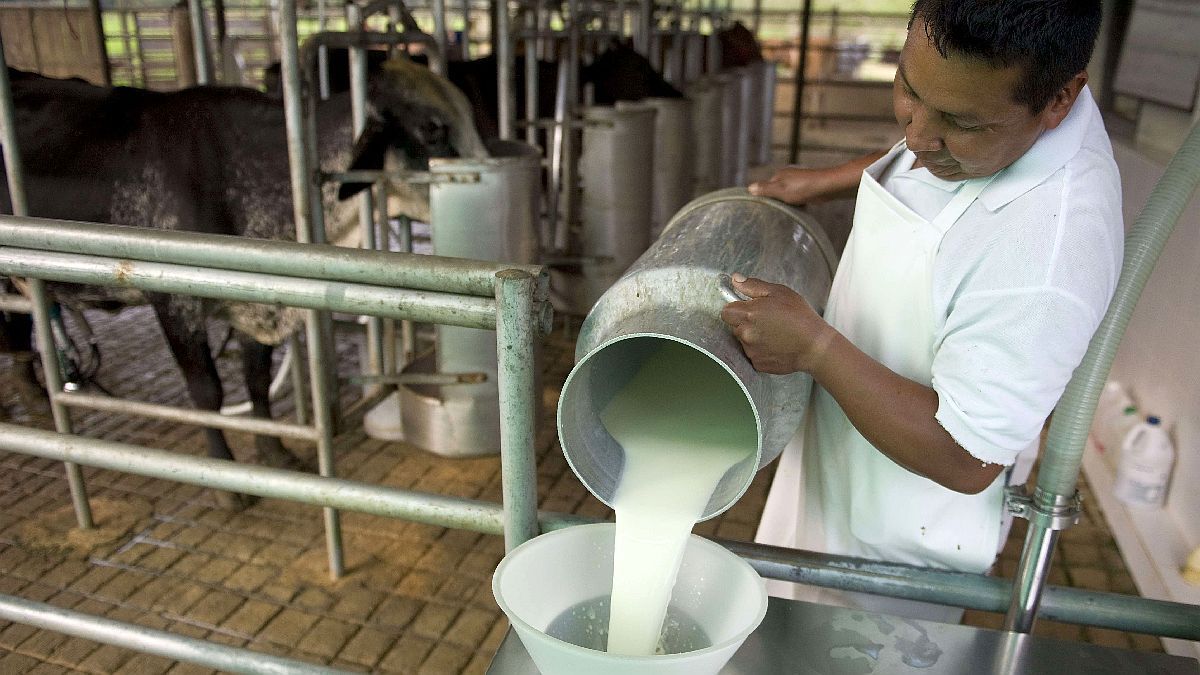In a context of severe economic recession, dairy product sales fell by up to 44% during the first 7 months of the year. In light of this, The Social and Popular Economy Roundtable (MESyP) launched a program that offers a liter of milk for $800.
The decline in milk consumption
In an interview on the C5N television channel, Zanchetta analyzed the economic context that Argentina is currently facing and stated that, in times of severe crisis, “we must democratize the production and distribution of food so that it reaches all residents.”
In view of this, the member of MESyP He provided details of how the project that offers a liter of milk at affordable prices is carried out: “We work with Yatasto, which is of good quality and allows us to sell it at a responsible neighborhood price. $1,300, $1,400 is what it generally costs and we are selling ours for $960 and there is another one for $800.
supermarket inflation prices consumption sales food
Milk outside the program costs between $1,300 and $1,400 per liter.
Depositphotos
“The truth is that we are selling more than ever, because it is cheaper,” Zanchetta said. In addition, the program MESyP It offers other products at low prices, including: bread at $1,250 per kilo; pastries at $2,200; gnocchi at $1,800 pesos per kilo and ravioli at $2,400 pesos per kilo.
Zanchetta delved into the scope of the program and assured that “all real foods that They reach the residents of the neighborhoods that they can pay and we do not loot their pockets”. And then he concluded: “if we had had the support of the State, today this would be a national policy.”
Regarding the organization and marketing dynamics of the different products, Zanchetta reported that “in order for them to reach the neighborhoods there is a work carried out through the MESyPWe have days in different places in PBA and CABA and then there are our own popular stores where we go with the products and We sell them at the price we discussed.”.
On the other hand, the agricultural engineer specializing in the dairy industry, Alejandro Sanmartinodescribed the first seven months of the year as “aOne of the most historic falls” in milk consumption. “We have to remember 2 years in 40 that we had this kind of fall,” he said.
For the engineer, “the Dairy consumption depends on two factorshe population incomethat if it falls as it did, consumption also falls.” However, Sanmartino stressed that the variable of ” must be taken into accountmilk production throughout the country“to explain the historic decline in dairy sales.
“The data on the fall in production over the seven months coincides with the fall in consumption. That is: there is less dairy to offer due to a climate and economic problem. that the drums were dragging last year,” he concluded.
The decline in meat consumption
He annual per capita consumption of beef This year will be lower than in 1920, when it was 46.9kg. In 2024 it will be 45 kilos, well below the historical average of almost 73kg, according to a report from the Rosario Stock Exchange. This figure is the lowest in 110 years.
While the data reflect that the beef consumption has been declining since the second half of the last century, due to causes such as health factors, Argentina has always been among the countries with the highest consumption of this food. However, during economic crises, consumption urgently migrates to the intake of cheaper proteins such as chicken or pork.
Supermarkets-Inflation-Consumption-Prices-Purchase-Meat

Meat consumption is at its lowest level in 110 years.
Mariano Fuchila
Along these lines, according to the data collected, the sum of consumption of Bovine, poultry and pork in Argentina could reach 105.7 kilos. per capita. Compared to the 2023 figures, this reflects a 9% dropbeing 7 kilos less per inhabitant compared to the average of the last ten years (112.8 kilos).
Data released by the Rosario Stock Exchange indicated that the proportion of beef had fallen 3.5 percentage points compared to the data for 2023, which meant having reached a historic low. In this way, it is the first time in the records that it occurs that the inhabitants consume the same amount of beef as chicken, this value being around 44.5kg.
Regarding the reasons for the fall in consumption, the report revealed that, if the average gross income of the salaried sector is taken into account, Argentines would have enough to buy 146.6 kilos of roast beef in 2024. That represents a 5.6% drop compared to the 2023 figures, when the average was 155.2 kilos per year. Finally, if you compare it with the average consumption of the last ten yearsin 2024 each inhabitant would consume about 22 kilos less per personwhich means a drop of 13.3%.
Source: Ambito
David William is a talented author who has made a name for himself in the world of writing. He is a professional author who writes on a wide range of topics, from general interest to opinion news. David is currently working as a writer at 24 hours worlds where he brings his unique perspective and in-depth research to his articles, making them both informative and engaging.




